Preface
Identifying the key areas to be observed
- Learning.
- Society.
- Experience.
- Knowledge.
- Behavior.
This handbook provides a review of 6 topics related to learning and cognition theories and concepts. In particular, the following areas are covered: operant and classical conditioning, behaviorism and social learning theory, memory and attention, decision-making, language acquisition, and organization and lifelong learning. Each of the topics is discussed in detail based on the recent evidence and scholarly sources. The paramount goal of this handbook is to offer a review of the mentioned topics to provide insights into their practical application. The handbook will be beneficial for students, educators, and counselors in their practice to select the best option for a particular situation.
Introduction
The process of learning appears to be multifaceted yet essential to acquire new knowledge and skills, thus staying aware of the latest trends in education and a professional career. This handbook is a review of several constructs that are critical while working in psychology and assisting clients with their concerns and problems. While the handbook includes various concepts and theories related to cognition and learning, all of them are integrated by the idea of an in-depth understanding of how people learn, what mechanisms are involved, and how to improve learning abilities and outcomes.
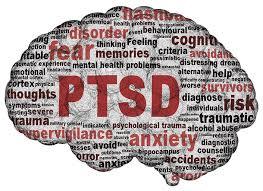
The section devoted to attention and memory was used to discuss opportunities in counseling people diagnosed with post-traumatic stress disorder (PTSD) and victims of the sex trade. The narrative therapy provisions of storytelling are suggested to allow such clients to focus on the problem instead of returning to their negative experiences. Furthermore, the narrative method offers to create a new story and align it with experience, feelings, and emotions, thus resolving complicated situations. It is important to emphasize that the evidence demonstrates that implementing the mentioned theory is beneficial to clients who need to deconstruct their extremely negative experiences and learn to live with it without continuous stress.
Learning and Cognition
Examining theories, evidence, and practice
Traditional Learning Theories: Operant and Classical Conditioning
In behavioral psychology, there are two basic concepts, such as classical and operant conditioning. Both of them describe the learning process yet from different perspectives. To understand how each of these behavior modification methods can be utilized in practice, it is essential to specify how they differ.
During his experiments with dogs, Pavlov, a Russian physiologist, discovered that respondent behavior could be classically conditioned. The essence of the process of classical conditioning is that initially, the neutral stimulus starts to cause the reaction due to its associative connection with the stimulus, which unconditionally generates the same or rather a similar reaction and an unconditioned response (UCR) (Bosworth & Judkins, 2014). For example, if a bullied student associates a negative experience with his or her school in general, this represents classical conditioning. In brief, the theory of classical conditioning:
- involves the presence of a neutral stimulus causing a reflex;
- is focused on involuntary, automatic actions.
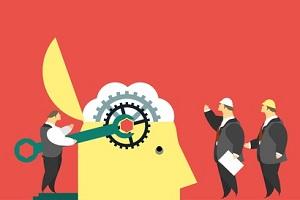
Elaborating on the operant conditioning theory, Skinner, an American psychologist, pays attention to the consequences of behavior – the results to which certain behaviors lead, but not its premises. The identified theory recognizes the active role of an educator and a particular environment in the learning process (Mensah, Okyere, & Kuranchie, 2013). Behavior cannot be regarded as a mere consequence of some stimuli’s impact. On the contrary, it reflects an individual’s personal motivation and external influences on their worldview. Operant learning can be thought of as a learning process based on:
- connection of irritant -> reaction -> reinforcement, in which behavior is formed and maintained due to some of its consequences;
- use of reinforcements or punishments after demonstrating the behavior.
The concept of comprehension is largely associated with analyzing one’s behavior to understand whether it is conscious or subconscious. Classical conditioning involves creating an association between the stimulus and the involuntary reaction, while the operant considers the relationship between consciously controlled behavior and its consequences. The instructors applying the identified learning theories should be aware that classical conditioning is passive on the part of a student. At the same time, the operant one requires the trainee’s active participation: he or she should perform certain actions to be encouraged or punished. For instance, teachers may use operant conditioning by exposing marks to reward good behavior or correct answers.
Practical implementation of operant conditioning: the social importance of behavior may be considered on the example of School-wide Positive Behavioral Interventions and Supports (PBIS) reviewed within the last 20 years. In their study, Horner and Sugai (2015) explore the role of positive reinforcement in changing students’ behaviors at schools. Based on the principles of operant conditioning, the authors identify several lessons learned from analyzing PBIS. It is also discovered that a set of components form schoolwide PBIS, as shown in Figure 1.
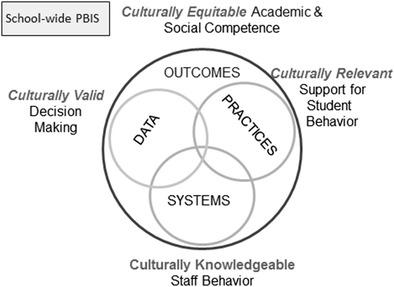
The identified systems support the sustainability and effectiveness of practices, focusing on students as the main target instead of emphasizing organizational behavior in general. More to the point, such a system allows achieving greater comprehension between students and educators, thus serving as an instrument that eliminates school-related challenges and social concern. Accordingly, the discussed PBIS may by applied in other schools in terms of behavioral theories.
Traditional Learning Theories: Behaviorism and Social Learning Theory
Compared to the previous theories, where the innate instincts are the source of a person’s development, the social learning environment is at the center of the social learning theory. The subject of the study of this direction of psychology is not composed of emotions, experiences, or mental actions but of externally observed behavior (Pritchard, 2014). If the same signals are combined with negative reinforcement (for example, with a current shock), they will trigger a defensive reaction. This mechanism for forming connections between external stimuli and reactions (S-R) was laid by the American scientist Watson, the founder of behaviorism.
However, this mechanism was significantly expanded and enriched with new concepts. Pritchard (2014) states that Bandura, who elaborated on the previous scholars’ principles, reveals that there are several essential conditions, such as attention, retention, reproduction, and motivation. Concerning social learning, the given theory also correlates with the theory of reciprocal determinism that implies the mutual impact of the environment and a person.
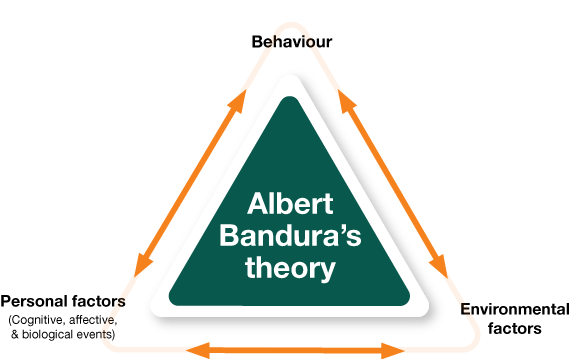
According to the theory of behaviorism, parents and educators’ task is to support a child’s correct, socially acceptable behavior, and reject unacceptable forms of behavior and, thus, socialize him or her. If the child’s repertoire of behavior does not have a corresponding reaction, it can be acquired by observing the behavior of the model (Ertmer & Newby, 2013). Learning through imitation in behaviorism is the key way of acquiring new forms of behavior.
Special emphasis on the role of imitation is made by the American psychologist Bandura. He believed that rewards and punishments are not enough to teach a new behavior, and children acquire new behavior by simulating the model (Ertmer & Newby, 2013). One of the manifestations of imitation is identification – a process in which a person borrows actions and the thoughts and feelings of others who act as a model. As a result, this leads to the fact that the child can imagine himself or herself in the model’s place and feel empathy for this person.
Developmental social factor: learning through observation and internal cognitive factors (expectations, self-perception, et cetera);
Behaviorism studies the problem of socialization and the processes of social learning, including conditions and mechanisms.
Value: drawing attention to the conditions and ways of education in the family and at schools as a process of modeling children’s behavior.
The weak point of this concept is underestimating a person’s consciousness – his or her will and activity. According to behaviorism theory, classical and operant conditioning are universal learning mechanisms common to humans and animals. At the same time, learning automatically occurs as reinforcement leads to fixing successful reactions in the nervous system, regardless of the person’s will and desire. In other words, behaviorists conclude that with the help of incentives and reinforcements, it is possible to form any behavior of a person since it is rigidly determined by the above conditions. In this sense, it seems that a person is guided only by external circumstances and their experience, which undermines the role of emotions and consciousness.
Attention and Memory
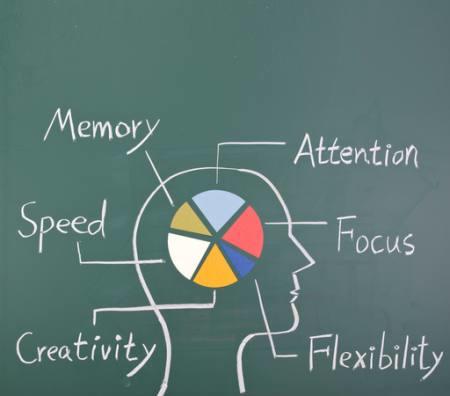
Memory and attention develop throughout the life of a person. Their formation is associated with the development of the nervous system and depends on upbringing, learning, and the characteristics of various activities. Memory develops quantitatively as speed and volume of memorization increase and qualitatively – from involuntary to arbitrary and from figurative to verbal (Wyer, 2014). Only by constant training one can improve memory and attention. It should be clarified that a person’s memory improves along with his or her general development and the improvement of thinking, imagination, speech, and character.
To perceive any phenomenon, it is necessary to consider that it can cause an orientation reaction, which will allow adjusting one’s senses. Such arbitrary or involuntary orientation and concentration of mental activity on any object and perception is called attention. The very concept of perception is impossible without attention. Attention and interest in one or another object are the main factors affecting memory development and retention.
Discussing memory and attention, one may focus on their utilization in a professional career in consulting people with post-traumatic stress disorder (PTSD) and sex trade victims. Shin et al. (2015) provide the multivariable regression analysis among the mentioned categories and discover that avoidance symptoms serve as early signs of PTSD, while verbal memory changes are also noted. Indeed, stress makes a huge impact on one’s perception of the world – people tend to focus their attention only on the negative event that occurred with them, while memory may distort some details (Shin et al., 2015). Such a situation leads to the fact that everything except the stressful situation losses its importance.
In this connection, narrative therapy may be used as one of the relevant options. As the conversation in which people redistribute, the narrative theory allows clients to tell a new story of their life. Peri and Gofman (2014) state that for narrative therapists, the concept of history is a set of events tied together in definite sequences over a certain time interval and composed in a meaningful plot. The key goals of such an approach are:
- To handle problems in a broader sociocultural context;
- To help people to objectify their difficulties;
- To learn how to create a place for new and more positive stories.
Narrative psychology aims to create a space between a person and the problem, thus allowing understanding opportunities rather than disadvantages.
Narrative therapists distinguish a person from their problems as the former do not discuss a problematic person but his or her problem. A counselor is expected to encourage clients and direct the conversation, asking what they prefer to talk about (Peri & Gofman, 2014). On an ongoing basis, they should check whether the problem is the subject of discussion. After a while, the counselor may ask to tell other, more positive stories from life to help discover the inherent traits and skills that can be used to solve difficulties. The goal is to see that positive and productive are seen by the client to promote a healthy future when one stops identifying himself or herself with the problem.
Decision-Making
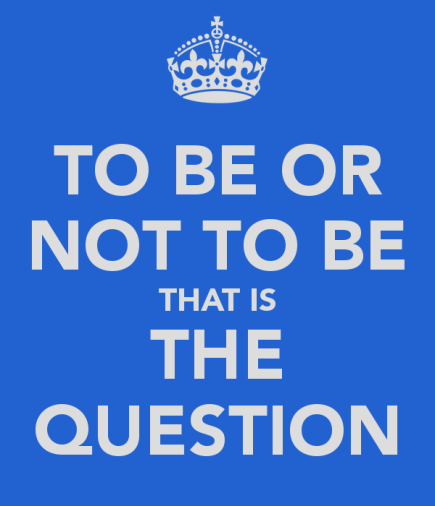
Conscious actions and human behavior are performed based on thoughtful and accepted decisions. A decision’s nature, direction, and intensity of actions depend on understanding and considering a specific situation. In turn, the latter depends on the level of intellectual development and the social experience of a person (Shapiro & Stefkovich, 2016). The motive or system of motives composes the immediate motivator of actions and is supported by one’s worldview as a set of ideas, interests, and beliefs.
In standard situations, a person with a formed attitude behaves in a certain way in accordance with the principles of interaction with surrounding people, which does not contradict this worldview. However, life is full of uncertain situations and unpredictability of the outcomes of human activity. In such circumstances, decision-making becomes a complex psychological problem.
It is stated that the consideration of many criteria brings the formulation of the problem closer to real life. Traditionally, it is common to distinguish three main types of decision-making tasks:
- ordering of alternatives. For several problems, the requirement to determine the order on a set of alternatives is quite justified;
- distributing alternatives according to decision classes;
- highlighting the best alternative.
Problem-solving: is performed through a holistic assessment of the situation, relying on one’s emotional perception or objective, logical analysis, and distancing from the situation to assess both advantages and disadvantages. As the main stages of decision-making, Shapiro and Stefkovich (2016) highlight: the search for solutions, the invention of new alternatives, and selecting the best alternative from the range of existing solutions. One may note that all these basic stages of decision-making are encountered in different decision-making situations.
The decision theory analyzes the mechanisms used by people to resolve their problems and tasks to achieve the desired outcome. Several models describe the stages and phases of decision-making, even though it is a multifaceted process involving various factors. In their study, Pelé and Sueur (2013) discuss race and diffuse models of decision-making, the results of which are presented in Figure 2. While the former model implies that respondents are led by motivation, the latter focuses on the difference between the given options.
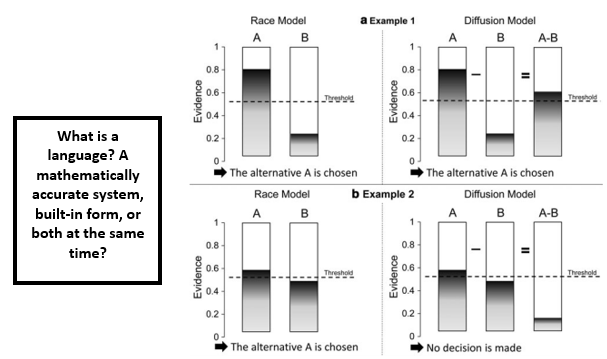
Decisions may be formal or genuine, complex and semantic, or intermediate and final. Thus, decision-making is an important life process characterized by its stages, theories, methods, specific characteristics, and responsibility for consequences. A choice is the main step in the decision-making process as a person accepts one decision from the proposed set of options, the resolution of uncertainty in life, and human activity in the conditions of the diversity of various alternatives.
Language Acquisition
The debates over language acquisition started in the 20th century, while this issue remains critical today. Skinner was one of the first who scientifically explained the process of learning a language by children. He argued that the core factor influencing the study of the children of the language factor is the environment (Larsen-Freeman & Long, 2014). According to Skinner’s views, children learn the language based on behavioral reinforcement principles, associating words with their meanings in terms of the so-called language acquisition device. Correct expressions work best when a child understands the communicative value of words and phrases. For example, when he or she says the word “water” and the mother gives him or her a glass of water, the child will perceive the result of this interaction as a reward, which enhances the child’s linguistic development.
Chomsky was skeptical about the idea that natural selection can explain the process of language acquisition. Even though it is impossible to assume that each property passes a specific selection, it is not easy to imagine such a selection process that could inform children’s development. The identified scholar believes that the language acquisition device could not be formed in stages and introduce universal grammar.
Chomsky advanced the theory that claimed that children are born with a certain set of grammatical rules. Universal grammar is a concept that describes the fundamental properties of each natural language (Larsen-Freeman & Long, 2014). Usually, a person does not realize the rules, according to which the interpretation of sentences is realized in the language he or she knows. There is no reason to assume that these rules can become conscious. Moreover, there is no reason to expect that they will be aware of even the empirical consequences of these internalized rules – the way signals are attributed to semantic interpretations according to the rules of the grammar of the language. The following Table 1 presents the key points of both theories:
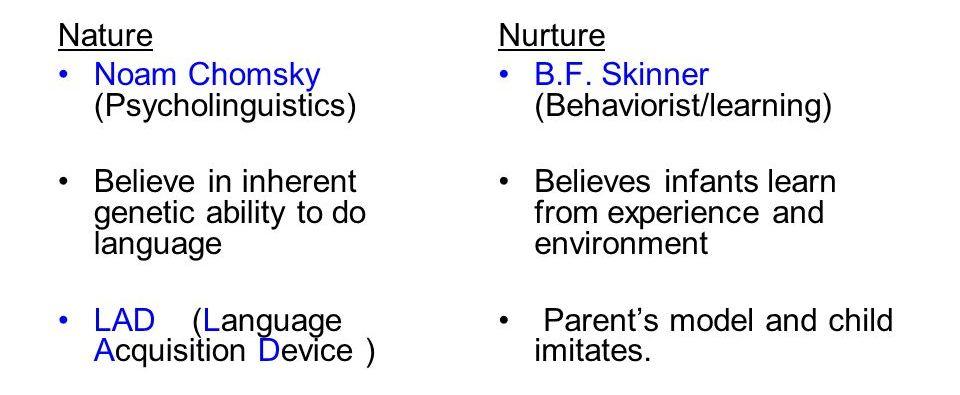
Indeed, a vivid example in favor of universal grammar is the observation of how children learn the language. At the age of two, a child understands the speech, obviously having no theoretical basis for this understanding. Also, any person with a normal level of mental development can use the language. Nevertheless, many adults have difficulties studying the mechanisms of the work of biological or physical laws.
However, these systems are arranged in the order of magnitude simpler than the linguistic one, as Larsen-Freeman and Long (2014) claim. However, from the point of view of epistemology, the theory of universal grammar allows recognizing the impossibility of obtaining objective knowledge by an individual. The innate ability to language, if any, provides but also limits cognitive abilities. The question regarding the language acquisition process remains unanswered, and further studies are focused on shedding light on some opportunities and challenges presented by both theories.
Organizational and Lifelong Learning
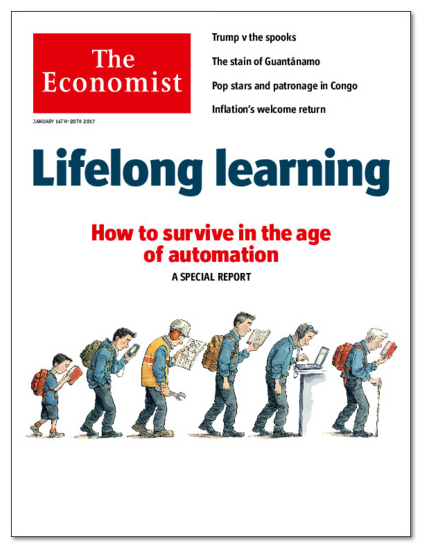
Today’s rapidly-developing environment sets new challenges and stimulates people to adopt lifelong learning as a means of remaining competent and competitive. The necessary components of management in the conditions of the smart economy of the 21st century are an innovative approach, long-term orientation, creativity, and the ability to take a justified risk (Zuber-Skerritt & Teare, 2013). Accordingly, increasing importance is attached to the development of employees’ qualifications and competencies. However, the idea of organizational learning also motivates both employers and employees to develop personal qualities that are significant to achieve the desired outcomes in both professional and personal areas.
In this connection, individual and group learning are proposed as the focal options, which allow people to select the preferred type of learning. The former is represented by mentorship and apprenticeship models of learning. Regardless of the type, the goals of lifelong learning for young people and adults are to develop self-reliance, commitment, and responsibility among, strengthen the ability to adapt to the transformations taking place in the economy, realize the cultural diversity of the society – the opportunities that to help people navigate the world of professions. The demographic differences such as race, age, gender, and religion set some differences in learning, while the paramount goals mentioned above are common to all people.
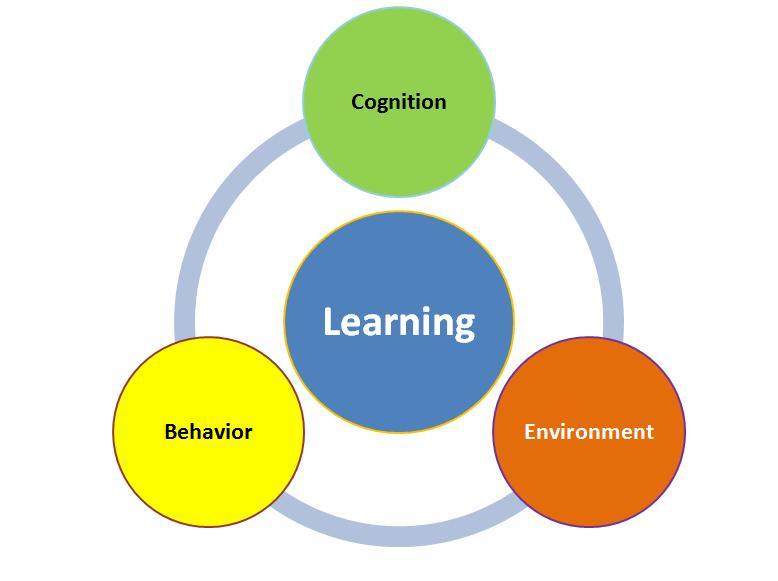
Conclusion
To conclude, learning and cognition are vital parts of education and world perception. Various concepts explain how people learn and comprehend objects, events, and activities around them. Operant and classical conditioning describe how people acquire knowledge and skills based on stimuli and rewards. In their turn, behaviorism and the social learning theory specify the role of the environment in the process of cognition, emphasizing that children and adults perceive others as models and mimic their behavior. It should be stressed that attention and memory are also vital since they ensure that a person learns and memorizes new information.
In a professional career, it is possible to use the narrative psychology principles to assist victims of the sex trade and people diagnosed with PTSD. The learning process involves decision-making that helps to ensure problem-solving based on creative thinking. More to the point, it was revealed that there are two main language acquisition theories – Chomsky’s universal grammar and Skinner’s behaviorism, both of which have weak and strong points. Ultimately, the given handbook discussed the concept of lifelong and organizational learning, which is promoted by contemporary society to remain competent in career and success in life in general.
References
Bosworth, K., & Judkins, M. (2014). Tapping into the power of school climate to prevent bullying: One application of schoolwide positive behavior interventions and supports. Theory into Practice, 53(4), 300-307.
Ertmer, P. A., & Newby, T. J. (2013). Behaviorism, cognitivism, constructivism: Comparing critical features from an instructional design perspective. Performance Improvement Quarterly, 26(2), 43-71.
Horner, R. H., & Sugai, G. (2015). School-wide PBIS: An example of applied behavior analysis implemented at a scale of social importance. Behavior Analysis in Practice, 8(1), 80-85.
Larsen-Freeman, D., & Long, M. H. (2014). An introduction to second language acquisition research. New York, NY: Routledge.
Mensah, J. K., Okyere, M., & Kuranchie, A. (2013). Student attitude towards mathematics and performance: Does the teacher attitude matter. Journal of Education and Practice, 4(3), 132-139.
Pelé, M., & Sueur, C. (2013). Decision-making theories: Linking the disparate research areas of individual and collective cognition. Animal Cognition, 16(4), 543-556.
Peri, T., & Gofman, M. (2014). Narrative reconstruction: An integrative intervention module for intrusive symptoms in PTSD patients. Psychological Trauma: Theory, Research, Practice, and Policy, 6(2), 176-183.
Pritchard, A. (2014). Ways of learning: Learning theories and learning styles in the classroom (3rd ed.). New York, NY: Routledge.
Shapiro, J. P., & Stefkovich, J. A. (2016). Ethical leadership and decision making in education: Applying theoretical perspectives to complex dilemmas (4th ed.). New York, NY: Routledge.
Shin, K. M., Chang, H. Y., Cho, S. M., Kim, N. H., Kim, K. A., & Chung, Y. K. (2015). Avoidance symptoms and delayed verbal memory are associated with post-traumatic stress symptoms in female victims of sexual violence. Journal of Affective disorders, 184, 145-148.
Wyer, R. S. (2014). Knowledge and memory: The real story: Advances in social cognition. New York, NY: Psychology Press.
Zuber-Skerritt, O., & Teare, R. (2013). Lifelong action learning for community development: Learning and development for a better world. Rotterdam, the Netherlands: Sense Publishers.